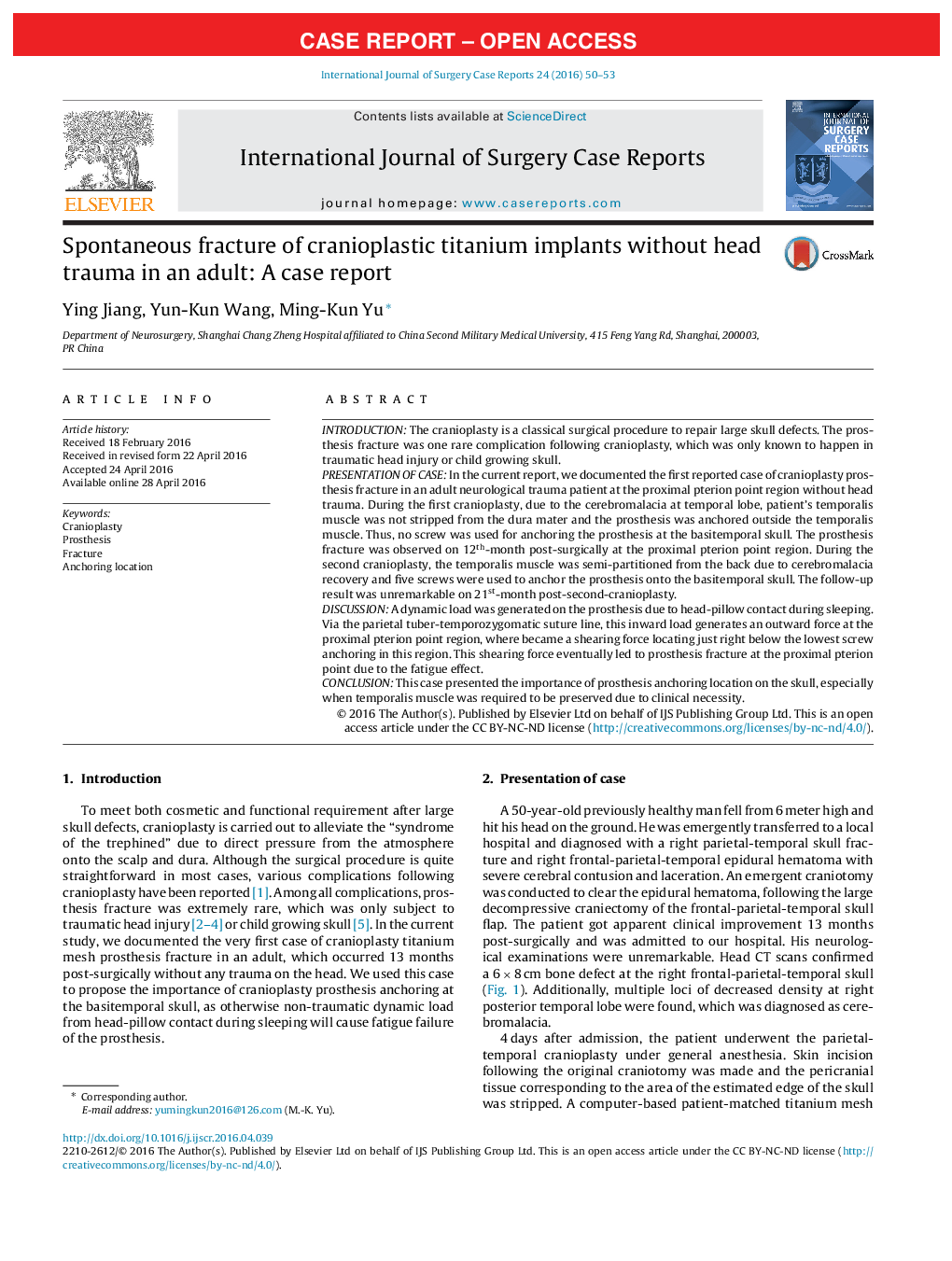| کد مقاله | کد نشریه | سال انتشار | مقاله انگلیسی | نسخه تمام متن |
|---|---|---|---|---|
| 4288241 | 1612090 | 2016 | 4 صفحه PDF | دانلود رایگان |
• The dynamic load was generated at basitemporal skull if prosthesis was not anchored to this loci.
• Via the parietal tuber-temporozygomatic suture line, this dynamic load was passed to the proximal pterion point region, which eventually generated fatigue effects on the prosthesis and eventually fracture.
• The cranioplasty prosthesis shall be well anchored onto the basitemporal skull to prevent fatigue effects of the prosthesis.
IntroductionThe cranioplasty is a classical surgical procedure to repair large skull defects. The prosthesis fracture was one rare complication following cranioplasty, which was only known to happen in traumatic head injury or child growing skull.Presentation of caseIn the current report, we documented the first reported case of cranioplasty prosthesis fracture in an adult neurological trauma patient at the proximal pterion point region without head trauma. During the first cranioplasty, due to the cerebromalacia at temporal lobe, patient’s temporalis muscle was not stripped from the dura mater and the prosthesis was anchored outside the temporalis muscle. Thus, no screw was used for anchoring the prosthesis at the basitemporal skull. The prosthesis fracture was observed on 12th-month post-surgically at the proximal pterion point region. During the second cranioplasty, the temporalis muscle was semi-partitioned from the back due to cerebromalacia recovery and five screws were used to anchor the prosthesis onto the basitemporal skull. The follow-up result was unremarkable on 21st-month post-second-cranioplasty.DiscussionA dynamic load was generated on the prosthesis due to head-pillow contact during sleeping. Via the parietal tuber-temporozygomatic suture line, this inward load generates an outward force at the proximal pterion point region, where became a shearing force locating just right below the lowest screw anchoring in this region. This shearing force eventually led to prosthesis fracture at the proximal pterion point due to the fatigue effect.ConclusionThis case presented the importance of prosthesis anchoring location on the skull, especially when temporalis muscle was required to be preserved due to clinical necessity.
Journal: International Journal of Surgery Case Reports - Volume 24, 2016, Pages 50–53
